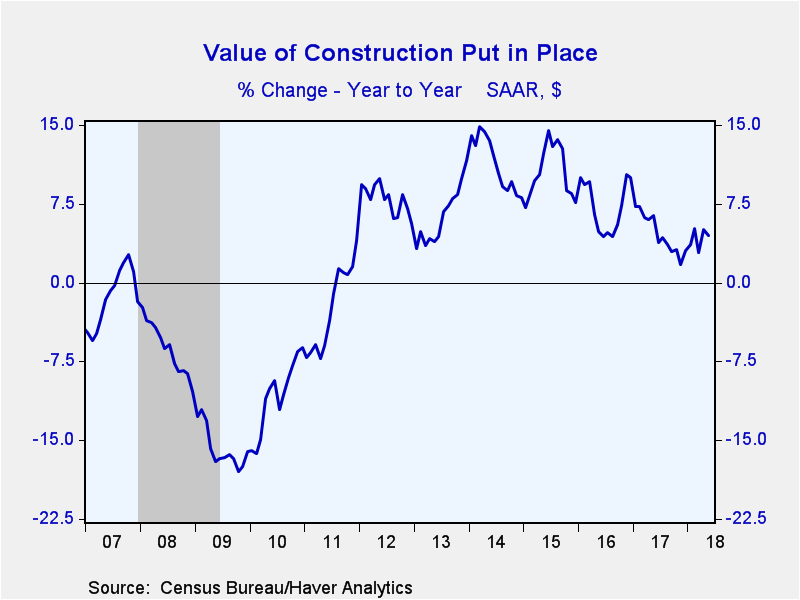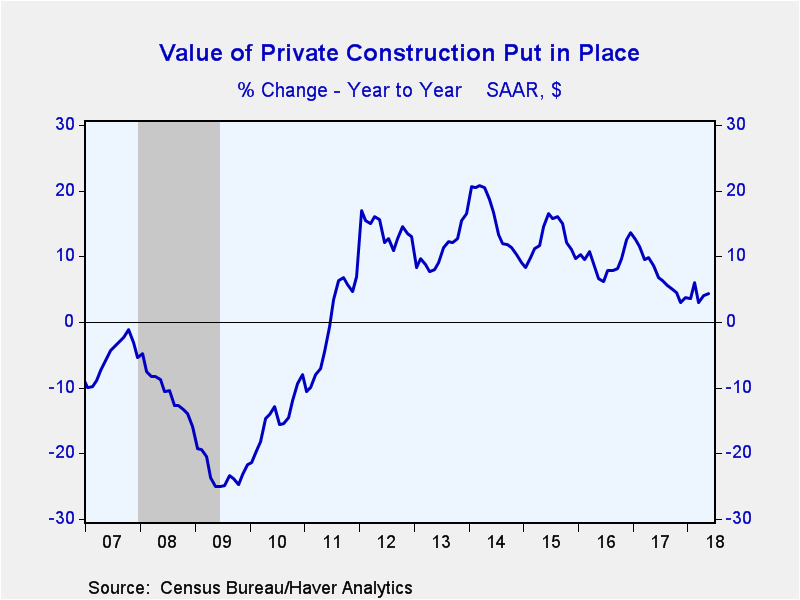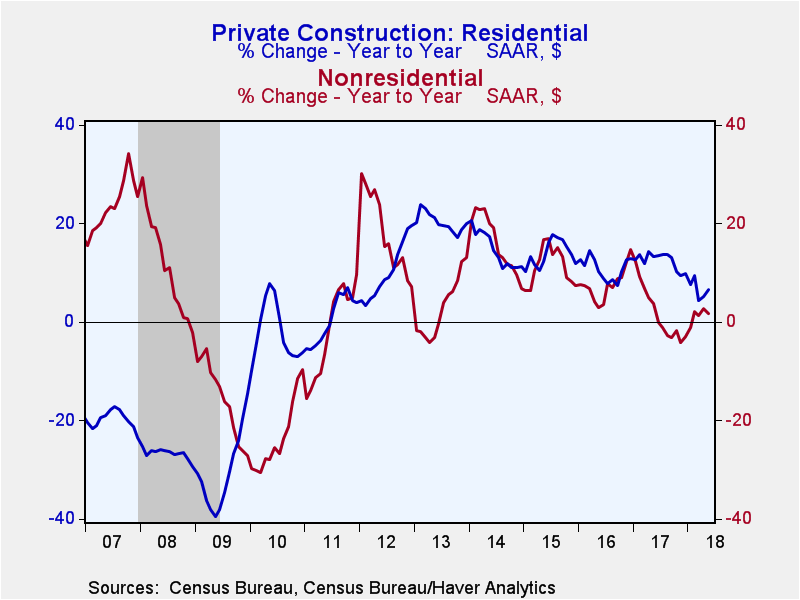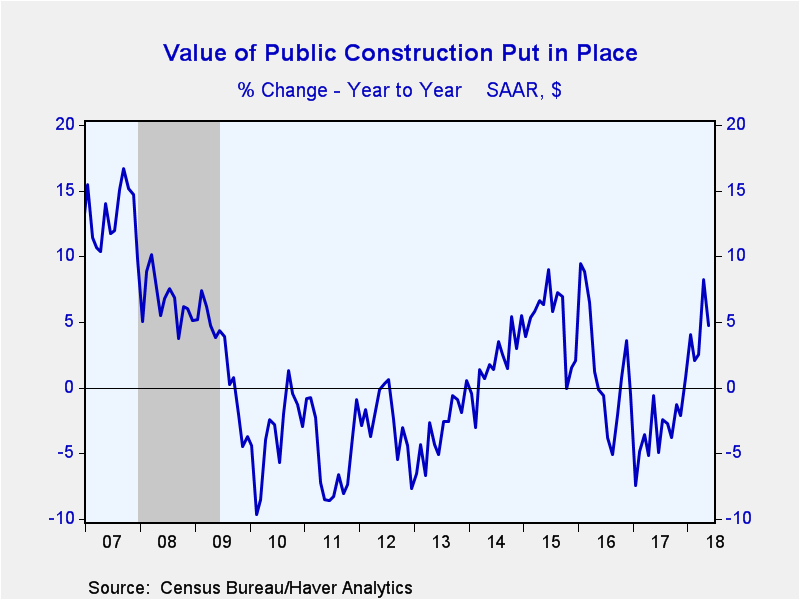 Global| Jul 02 2018
Global| Jul 02 2018U.S. Construction Spending Weaker Than Expected; Q2 Remains Strong
Summary
The value of construction put-in-place increased 0.4% month-on-month in May (4.5% year-on-year), slightly less than the 0.5% expected by the Action Economics Forecast Survey. April's gain was cut in half to 0.9% m/m and March's drop [...]
The value of construction put-in-place increased 0.4% month-on-month in May (4.5% year-on-year), slightly less than the 0.5% expected by the Action Economics Forecast Survey. April's gain was cut in half to 0.9% m/m and March's drop was revised to a smaller decline. On net the level of construction spending in April was lower than originally reported. Despite these weaker readings, second quarter construction spending is 1.2% (4.8% annualized) above the first quarter level.
Private sector building activity, which is over three times the size of public sector spending, increased 0.3% m/m (4.4% y/y). Residential construction spending grew 0.8% (6.6% y/y) while non-residential declined 0.3% (+1.8% y/y). As with total construction, the revisions to March and April left spending in all of these categories at a lower level in April than originally reported. In the residential sector, single family construction increased 0.6% in May, the volatile multi-family sector rose 1.6% and home improvements were up 0.9%.
The value of public sector building activity grew 0.7% (4.7% y/y) in May after an upwardly revised 2.3% jump in April (was -1.3%). March's increase was revised slightly lower to 1.0% m/m. The largest component of public construction, highway and street edged down 0.2%, while the second largest, education rose 0.9%.
The construction spending figures, some of which date back to 1946, are in Haver's USECON database. The expectations reading can be found in the AS1REPNA database.
| Construction Put in Place (SA, %) | May | Apr | Mar | May Y/Y | 2017 | 2016 | 2015 |
|---|---|---|---|---|---|---|---|
| Total | 0.4 | 0.9 | -0.9 | 4.5 | 4.1 | 6.5 | 10.7 |
| Private | 0.3 | 0.4 | -1.5 | 4.4 | 6.2 | 9.2 | 12.9 |
| Residential | 0.8 | 0.5 | -2.4 | 6.6 | 10.9 | 10.5 | 14.2 |
| Nonresidential | -0.3 | 0.4 | -0.4 | 1.8 | 1.1 | 7.7 | 11.5 |
| Public | 0.7 | 2.3 | 1.0 | 4.7 | -2.5 | -1.2 | 5.1 |
Gerald D. Cohen
AuthorMore in Author Profile »Gerald Cohen provides strategic vision and leadership of the translational economic research and policy initiatives at the Kenan Institute of Private Enterprise.
He has worked in both the public and private sectors focusing on the intersection between financial markets and economic fundamentals. He was a Senior Economist at Haver Analytics from January 2019 to February 2021. During the Obama Administration Gerald was Deputy Assistant Secretary for Macroeconomic Analysis at the U.S. Department of Treasury where he helped formulate and evaluate the impact of policy proposals on the U.S. economy. Prior to Treasury, he co-managed a global macro fund at Ziff Brothers Investments.
Gerald holds a bachelor’s of science from the Massachusetts Institute of Technology and a Ph.D. in Economics from Harvard University and is a contributing author to 30-Second Money as well as a co-author of Political Cycles and the Macroeconomy.









